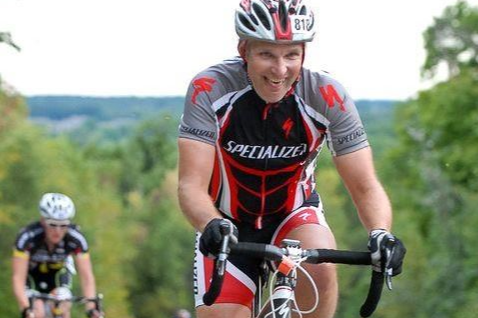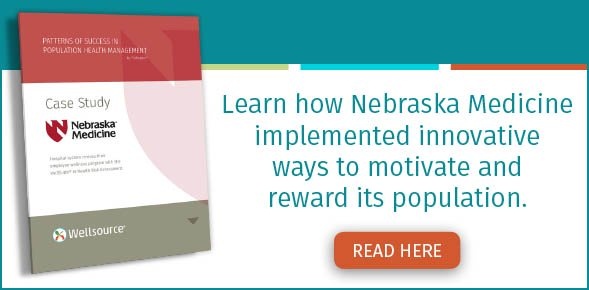 |
| Dr. DeBehnke, Nebraska Medicine CEO |
Ever wonder if you’re looking at your health risk assessment data in the right ways to improve population health?
Nebraska Medicine CEO Dr. Daniel DeBehnke does. It’s on his mind every morning as he rides his bike to work. He’s on a mission to help this hospital system improve quality of care, patient safety, and clinical efficiency.
But he’s also committed to supporting Nebraska Medicine’s employee wellness program to promote health, prevent disease, control costs, and help the estimated 6,000 people who work there be healthier, happier, and more productive.
If you want to improve the health of your population and make informed decisions to control healthcare costs, taking a closer look at health assessment data can help, says DeBehnke. Here are a few examples:
Biometrics
About 45 percent of all Americans suffer from at least one chronic disease. What does your biometric data say about your population?
At Nebraska Medicine, biometric data is a key component for measuring population health. Biometric screenings along with health risk assessment data are given to administrators in an annual report.
From there, recommendations can be made to move the wellness program forward. Director of Total Rewards and HR Operations at Nebraska Medicine, Laurie Willburn, was able to identify areas of improvement in the organization’s Total Rewards benefits program, like becoming a tobacco-free employer.
“After we announced this change, one person approached our benefits team who had been a smoker for 20 years,” says Willburn. “He wasn’t happy about the new standards, but he was willing to comply. Now he’s been tobacco-free for over five months. It’s a great reminder that strategic decisions we make about our wellness program can help people make major lifestyle changes.”
Physical Activity
Did you know that less than 5 percent of adults participate in 30 minutes of physical activity every day?
Willburn wanted to make her population more active after seeing their HRA results. Empowered with this information, she made access to a fitness center easier.
The result? A 400 percent increase in fitness center usage. Employees love that they have access to exercise classes and personal trainers.
Without seeing the results from their health risk assessment, Wilburn may have not realized the need for easier access to the fitness center. Says Wilburn, “Strategic decisions we make about our wellness program can help people make major lifestyle changes.”
Mental Health
You might think that doctors and nurses are the healthiest people, because they know what a healthy lifestyle looks like. However, studies have shown that the stress of these professions can increase vulnerability to mental illness. That’s why a focus on not only physical but also mental health is so important for a population like Nebraska Medicine.
Does your population deal with a high level of work related stress?
Companies that take initiative to expand access to high-quality mental healthcare services for their employees see significant improvements in productivity and medical expenses.
Pedaling Population Health Management in the Right Direction
DeBehnke really makes the most of his morning commute, but you don’t need a bike ride to think about ways to improve your population’s health. These are just a few of the data points you can pull from an effective wellness assessment to make informed decisions.
Want to learn more about how health risk assessment data helped Nebraska Medicine transform their workplace wellness? Download the case study.








